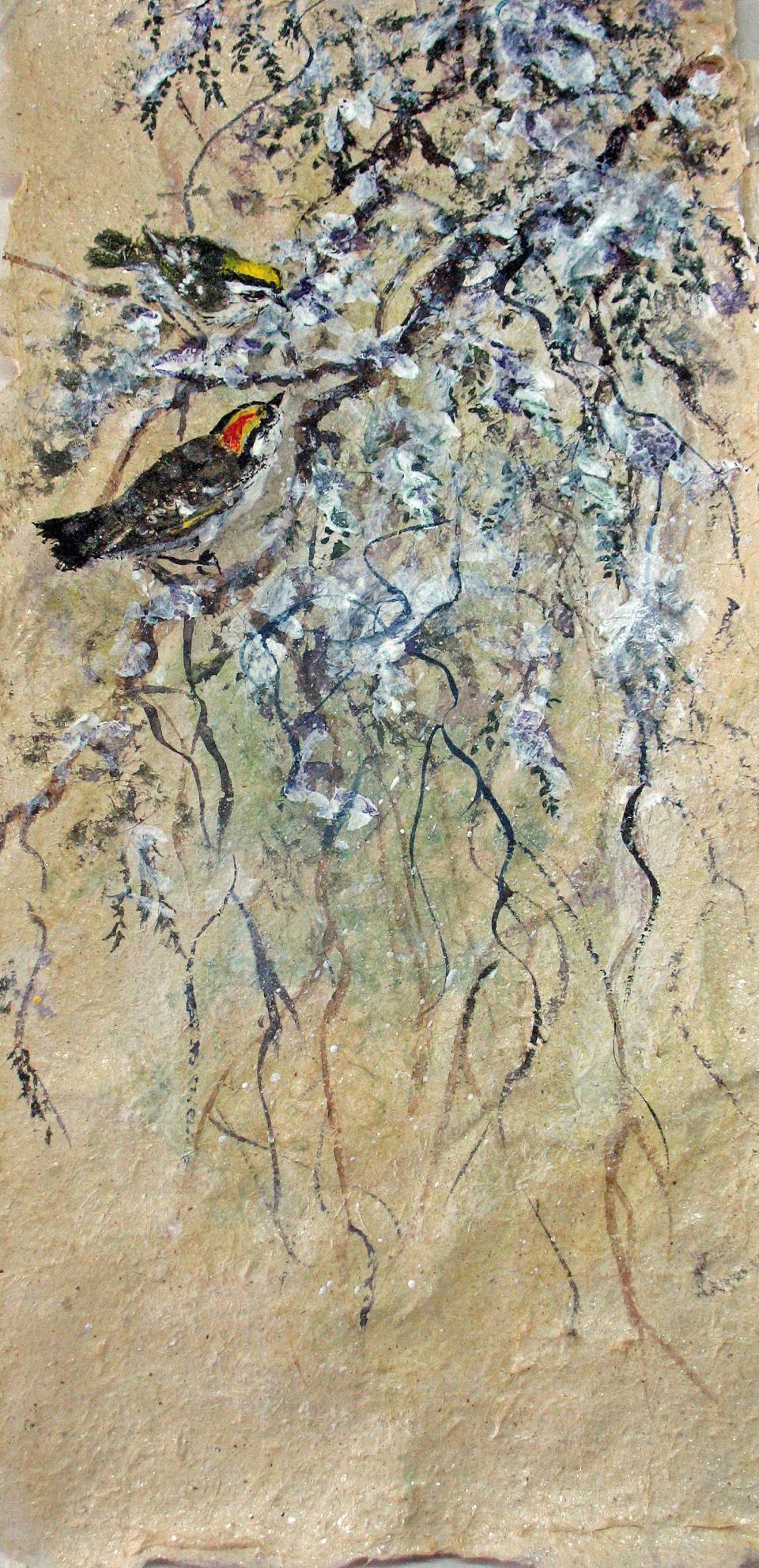Nature Journal: Watch for kinglets in Western North Carolina as they 'migrate vertically'
If from now until September you spot a tiny tear-shaped bird flitting around the outer branches of a red spruce, Fraser fir or eastern hemlock, you're probably observing a kinglet. That supposition will be strengthened if the bird displays the nervous habit of flicking its wing-tips.
There are two kinglet species: golden-crowned and ruby-crowned. They aren’t very much larger than hummingbirds. The ruby-crowned (4 inches in length) is olive-gray above with distinct wing-bars and white eye-rings. When agitated, males display the ruby-colored patches situated on the tops of their heads. Its call is a husky "ji-dit." The ruby-crowned species is with us in Western North Carolina from October into early April, when they are usually encountered as solitary individuals.

The golden-crowned kinglet (3.5 inches) is olive-gray above with distinct wing-bars like its cousin. But instead of an eye-ring, the golden-crowned has a black stripe on the lower eye level and a bright white stripe above the eye. The female has a yellow crown, whereas the male has a yellow crown with and orange center. The species is with us in WNC in the lower elevations during winter and as nesting birds in the higher elevations from spring until fall.
Golden-crowns are more sociable than ruby-crowns. During the winter months they can be observed traveling in mixed flocks with other golden-crowns, as well as downy woodpeckers, nuthatches, chickadees, titmice, brown creepers and other species.
Both kinglets are reported to sometimes feed on suet but, for the most part, they glean insects from branches or capture insects in flight. If you see a bird fluttering butterfly-like at the tips of a branch, it’s horizontally and vertically; that is, most of them fly to the far north to nest but a certain percentage also finds suitable nesting habitat in the high-elevation conifer forests of the southern mountains. Instead of migrating hundreds of miles each spring and fall, these vertical migrators simply ascend or descend a few thousand feet.
Juncos, red-breasted nuthatches, brown creepers and black-capped chickadees also practice similar migration tactics.
For the most part, golden-crowns breed in spruce-fir forests in areas like the Smokies and the high ranges north of Asheville to Mount Rogers in Virginia. There is, however, no spruce-fir habitat in the Highlands vicinity. There they nest in stands of either Carolina or eastern hemlock, as well as in stands of white pine.
They also nest in the red spruce stand located in the Alarka Laurel area of the Cowee Mountains south of Bryson City. To my knowledge, this now-declining stand of red spruce is the southernmost in North America. So, it makes perfect sense that the site would harbor golden-crowned kinglets.
Golden-crowns are noted for their tameness. I've often walked through the forest at Alarka Laurel (where Jackson, Swain and Macon corner) when they would accompany me for some distance, flitting just above my head, and sounding their high wiry "tsee-tsee-tsee" calls as if in friendly greeting.

George Ellison is a naturalist and writer. His wife, Elizabeth Ellison, is a painter and papermaker who owns a gallery in Bryson City. Contact them at info@georgeellison.com or info@elizabethellisongallery.com or write to P.O. Box 1262, Bryson City, NC 28713.
This article originally appeared on Asheville Citizen Times: Nature Journal: Kinglets in WNC migrate vertically

